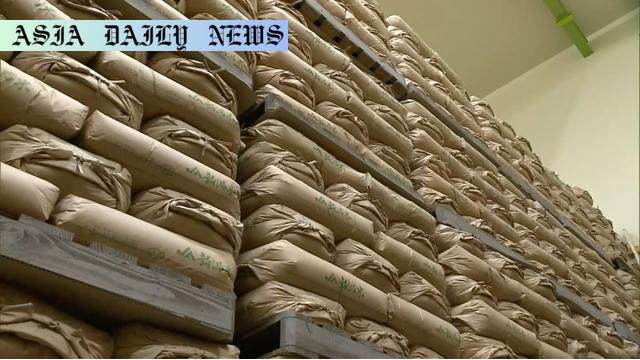Rice Distribution: About 1.9% of auctioned rice stockpiles reached consumers as of April 13, highlighting slow distribution progress.
Rice Distribution challenges arise with only 1.9% reaching consumers.
About 210,000 tons of rice stockpiles auctioned, yet minimal retail penetration.
Delays blamed on time-consuming business agreements and varied supply timelines.
The agriculture ministry anticipates increased distribution by late April or May.

Overview of the Current Rice Distribution
Japan’s agriculture ministry recently disclosed the state of rice distribution from auctioned stockpiles, revealing that a mere 1.9% of the total 210,000 tons has reached consumers as of April 13. This slow distribution rate highlights significant challenges within the supply chain, raising concerns about whether the government’s ambitions for steady rice supplies can be effectively achieved. Auctions conducted earlier in the year saw wholesalers purchasing the majority of the rice stockpiles, with primary wholesalers acquiring 137,879 tons and secondary wholesalers garnering another 20,073 tons. However, retailers, restaurants, and other businesses – the main avenues for consumer access – have obtained a paltry 4,179 tons. This indicates a clear bottleneck at the level of business-to-business transactions.
Challenges Highlighting the Bottleneck
Agriculture minister Eto Taku initially projected that rice from the national reserves would reach store shelves more prominently by April 10. However, recent updates suggest that smaller retailers and mid-sized supermarkets may not begin selling this rice until late April or May at the earliest. Delays in distribution have been attributed to the complexities of deal-making between wholesalers and retailers. The ministry has voiced its assurance that supplies would stabilize over time, assuring the public that the stockpiles would gradually filter through marketplaces.
Government’s Mitigation Strategies
In response to the delays, the agriculture ministry is actively encouraging businesses to expedite distribution processes. Measures include urging wholesalers to collaborate transparently with retailers while considering consumer demands. Yet another layer of complexity is added by the varying timelines required by different retailers and restaurants to integrate auctioned stockpiles into their regular offerings. Additionally, logistical challenges in warehousing, transportation, and distribution networks compound the delays in meeting consumer demands.
Impact on the Market and Consumers
The noticeable delay in rice reaching retail markets has led to limited consumer access to affordable staple food. This situation is particularly concerning in Japan, where rice consumption is integral to daily life. Meanwhile, businesses dependent on these rice supplies, such as mid-sized restaurants and local retailers, face potential disruptions in their operations. An aspect worth noting is the public sentiment, which may dwindle if visibility of the auctioned rice remains marginal for an extended time period.
Conclusion
While the auctioning of rice stockpiles was aimed at stabilizing supply and meeting consumer demand, the on-ground realities paint a different picture. The agriculture ministry and associated stakeholders have their work cut out to streamline and expedite the delayed distribution processes. It remains to be seen how effective government interventions will be in meeting their earlier stated goals of steady supply, and how the consumer market will respond if delays persist beyond the expected improvement timeline.
Commentary
Analyzing the Impact of Delayed Rice Distribution
The delay in distributing rice stockpiles in Japan raises important questions concerning the effectiveness of supply chain management and government interventions. Rice is a staple food in Japan, and any disruption in its availability directly impacts not just consumer satisfaction but the broader food economy as well. The current situation, where only 1.9% of auctioned rice stockpiles have reached retailers, reflects gaps in the supply chain that were perhaps underestimated during initial planning phases. With businesses taking significant time to finalize agreements, the question arises whether stronger coordination mechanisms were necessary at the outset.
The Role of Wholesale and Retail Interactions
A significant bottleneck appears to stem from delays in deal-making between wholesalers and retailers. While wholesalers have acquired large quantities of rice, the failure to transition this stock into consumer availability points to several issues. First, there may be inefficiencies in logistical planning that prevent timely distribution. Second, smaller and mid-sized retailers could be struggling with operational barriers such as storage or demand forecasting. One must ask whether the agriculture ministry could play a more proactive role in facilitating smoother connections between stakeholders to expedite this process.
Addressing Consumer Expectations and Future Planning
The impact on consumers cannot be understated. In many ways, the public perception of government initiatives is tied to visible outcomes. Delays in seeing auctioned rice on store shelves could lead to frustration or even doubts regarding the efficacy of national reserves management. To enhance public trust and ensure more robust future distribution, the agriculture ministry could adopt more transparent communication strategies and continuously report progress. Moreover, investing in technology-driven solutions for inventory management and supply chain optimization may prove crucial in mitigating similar delays in the future.


